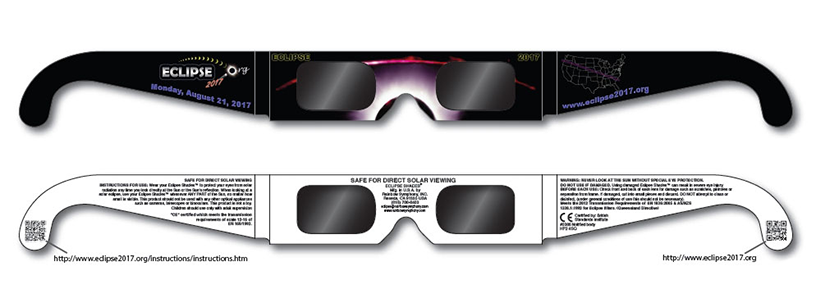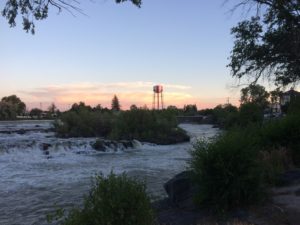UPDATE (2017 Aug 2) – I’ve had more than person ask whether they’ll be able to see the solar corona, the tenuous and very hot outermost layer of the Sun’s atmosphere, during the partial eclipse in Boise. I believe the answer is no.
This website indicates that the corona is a million times dimmer than the Sun’s photosphere. During the darkest part of the partial eclipse in Boise, the photosphere, the part of the Sun we usually see, will be 200,000 times dimmer than usual (see below).
So my guess is, from Boise, not enough of the photosphere will be occulted to reveal the corona.
Millions of people will travel from around the world to observe the total solar eclipse on August 21 in the path of totality, a band extending across the US in which the Moon will completely occult the Sun. Everyone NOT inside that path will observe a partial solar eclipse, and the closer you are to the path of totality, the darker your partial eclipse.
During our statewide tour talking about the eclipse, I have been asked again and again “Is it worthwhile trying to get to the path of totality?” The honest truth is that there are some aspects of the eclipse that you will miss out on if you don’t get to the path of totality.
BUT getting to the path of totality can be difficult – in Idaho, there are reports that all hotels and campsites are booked up, and driving to the path on the day of the eclipse will probably involve sitting in traffic for many hours. So travelers should be prepared with food and water.
So what will you see if you CAN’T get to the path? You can still enjoy a nice eclipse, but you MUST use eye protection during the ENTIRE eclipse. Staring at a partial eclipse at any level can permanently damage your eyes.

Eclipse shades, the best way to safely observe the solar eclipse.
What will you see during a partial eclipse? That depends on where you observe from. For example, Boise is just south of totality and will see a partial eclipse with 99.555% obscuration (check out this amazing map to see eclipse conditions anywhere in the world). That means the Moon will block all but 0.00445% of the Sun’s disk, making the Sun more than 200,000 times darker than usual.
So what will that look like? The visualization below shows an approximation as seen through eclipse shades. As one-two-hundredth its normal brightness, the Sun will appear a little dimmer than the sky at twilight* and about ten times as bright as the Sun normally appears from Pluto.

What a 99% partial eclipse looks like through eclipse shades. From http://americaneclipseusa.com/seeing-the-eclipse-from-home/.
At this level, though, you probably won’t be able to see the solar corona, and other eclipse effects will be substantially more muted. But for those who can’t take off of work or skip school – August 21 is a Monday, after all – the partial eclipse viewed from near the path of totality will still be a once-in-a-lifetime event.
*At 0.00445%, the usual solar flux (1300 W/m^2) will be reduced to about 0.06 W/m^2. This paper indicates that when the Sun is at a zenith angle of 105 degrees (i.e. a while after the Sun has set), the sky brightness is about 0.1 W/m^2.














